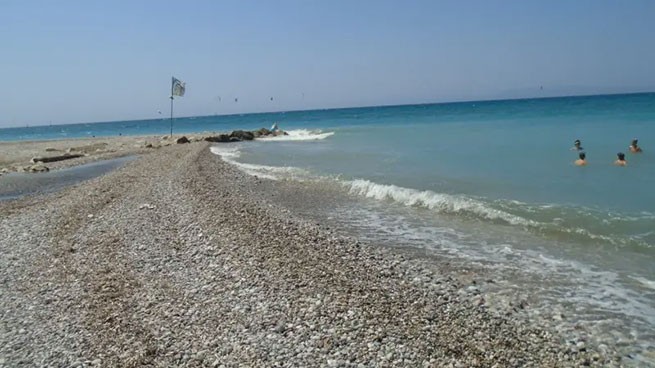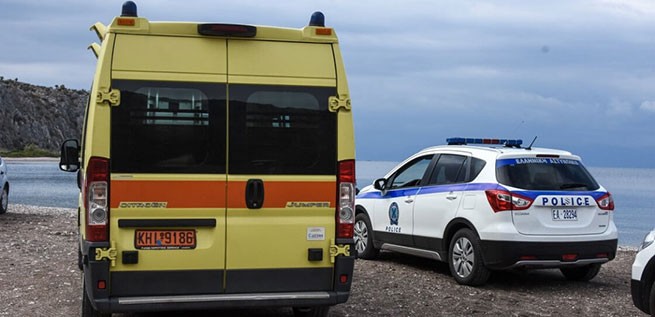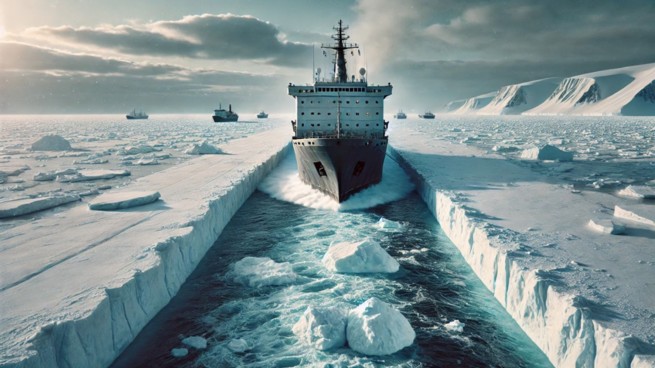Russia and China are increasing their influence in the Arctic using legal and technological capabilities, while the United States is forced to rely on diplomatic steps.
Bye Houthis are causing a stir in the Red Sea, China and Russia are wasting no time in taking advantage of the situation to strengthen their positions in the Arctic. In July, China sent three icebreakers to the region, just after a U.S. Coast Guard cutter was forced to abort its mission due to a fire. As the U.S. Naval Institute reported, China has not only expanded its Arctic presence, but has also begun to make extensive use of the Northern Sea Route (NSR), a route controlled by Russia.
The route has long been seen as an alternative to the Suez Canal for shipping Russian goods to Europe and Asia, and represents a major economic opportunity. But it also comes with the risk of Russia's strategic control over a key sea route (who is this poor, scared person?)
The NSR runs through the icy expanses of the Arctic, connecting East Asian manufacturing hubs with European markets. Trading companies have long dreamed of using the route, which allows you to avoid traffic jams in the Strait of Malacca, pirates off the Horn of Africa and problems in the Suez Canal. Of course, the conditions here are far from simple – ice, fog and shallow waters make these waters impassable for most of the year, but the prospect of reducing transportation time by weeks has always attracted traders.
Russia has long seen the route as the key to its Arctic resources – oil and gas. Not only does it actively use it to deliver raw materials to Western and Eastern markets, but it has also taken steps to strengthen its influence in the region. Moscow interprets the UN Convention on the Law of the Sea as it is written, which has some countries unhappy. Russia claims that the waters of three archipelagos located twenty miles from its coast are internal, which allows it to control access to the NSR, levy duties, and set its own rules.
In addition, Russia sets strict requirements for the ecology and safety of shipping (what's wrong with that? Caring for the planet). These rules are much stricter than international standards and include mandatory insurance and icebreaker escort, which, as you understand, is not cheap (apparently, icebreakers should go for free, or even better, Russia should pay extra). But that's not all: control over these rules remains exclusively with Russia, which gives it additional leverage over the entire route.
USA and EUas one might expect, dispute this interpretation of international law, arguing that navigation along the NSR should be governed by the UN Convention. Russia, however, has argued since 1963 that other countries do not use the route actively enough for the convention to apply. Canadian initiatives in the Northwest Passage add their own complications by supporting Russia in its dispute with the United States. Canada can. Russia cannot.
China is not far behind. It has declared itself a “near-Arctic state” and has significantly increased the construction of icebreakers. At the same time, the American icebreaker fleet is, to put it mildly, outdatedRussia has a whole armada of them, many of which are armed.
Russia and China intend to closely cooperate on Arctic issues, including shipping and polar vessel technology. According to recent data, the use of the NSR has allowed China to reduce the delivery time of Russian goods to 33-35 days, while through the Suez Canal it takes 45 days, and around Africa – 55. China is also actively developing dual-use technologies that can be used for military purposes.
Despite recent U.S. icebreaker deals with Canada and Finland, their efforts will not come close to matching the Russian-Chinese programs anytime soon. So the U.S. and its allies are forced to turn to international law (read: legal hooks) to limit Russia’s and China’s strategic ambitions. They must work toward a unified interpretation of the UN Convention on the Law of the Sea and the resolution of maritime disputes.
While Arctic Council countries have suspended cooperation with Russia amid the conflict in Ukraine, the United States can continue its efforts in other international forums to ensure compliance with international law. It should also monitor the environmental impacts of active use of the NSR and, if necessary, take legal action (Who authorized them?). In addition, it is important to monitor joint scientific research between Russia and China, which may have dual purpose.
In the Arctic, the US cannot resort to military methods, as in the Red Sea, Therefore, it is necessary to rely on legal instruments and international courts to put pressure on Russia and China and force them to comply with international norms (or to act against their interests).
A bit of theory. International law, including the United Nations Convention on the Law of the Sea (UNCLOS), distinguishes several categories of waters that determine the rights of a coastal state to use the sea. The main categories of waters and the corresponding rights and obligations of the country are as follows:
- Territorial waters (or territorial sea) is a strip of sea extending up to 12 nautical miles (22.2 km) from the baseline, that is, the coast or baseline of a state. The coastal state has sovereignty over its territorial waters, including its airspace and seabed. However, ships of other states have the right of “innocent passage” through these waters, as long as they do not endanger the security of the coastal state.
- Adjacent zone may extend up to 24 nautical miles from the baseline. In this zone, the coastal state may exercise control to prevent and suppress violations of its customs, immigration, sanitary and fiscal regulations, although it does not have full sovereignty in this zone.
- Exclusive Economic Zone (EEZ) extends up to 200 nautical miles (370 km) from the baseline. Within this zone, the coastal state has exclusive rights to explore and use natural resources: both living (e.g., fisheries) and non-living (e.g., oil and gas fields) in the waters, on the seabed and in its subsoil. At the same time, ships and aircraft of other states can freely pass through the EEZ, observing the rights and laws of the coastal state.
- Continental shelf — is the seabed and its subsoil extending beyond the territorial sea of a state to the natural end of the continental plateau (up to 200 nautical miles or more in the presence of special geological conditions). In this zone, the coastal state has sovereign rights to explore and use natural resources, but the water and airspace above the shelf remain free for international navigation.
Author's opinion: So do we live by rules or by laws? The Americans, who are used to solving problems in other regions using more aggressive methods, are forced to rely on legal and diplomatic instruments in the Arctic. Their fleet is outdated, and their resources for competition are limited. What is left? To appeal to international law, monitor compliance with environmental standards, and try to maintain balance in the region through alliances and legal mechanisms.
If you remove all the unnecessary details, the picture is clear: Russia and China are playing ahead, using every possible tool, from legal interpretations to technological breakthroughs. America, for its part, is limited in resources and is forced to seek support in the legal field. How will events develop? The answer is hidden behind the curtain of diplomatic maneuvers and strategic moves.







More Stories
Democrats reject Trump's proposal to require voters to show proof of US citizenship
Woman's Desperate Fight With Python Ends With 4-Meter Snake Defeated (Video)
By refusing to pay the fine, Orban could lose some of the funds allocated to him by the EU